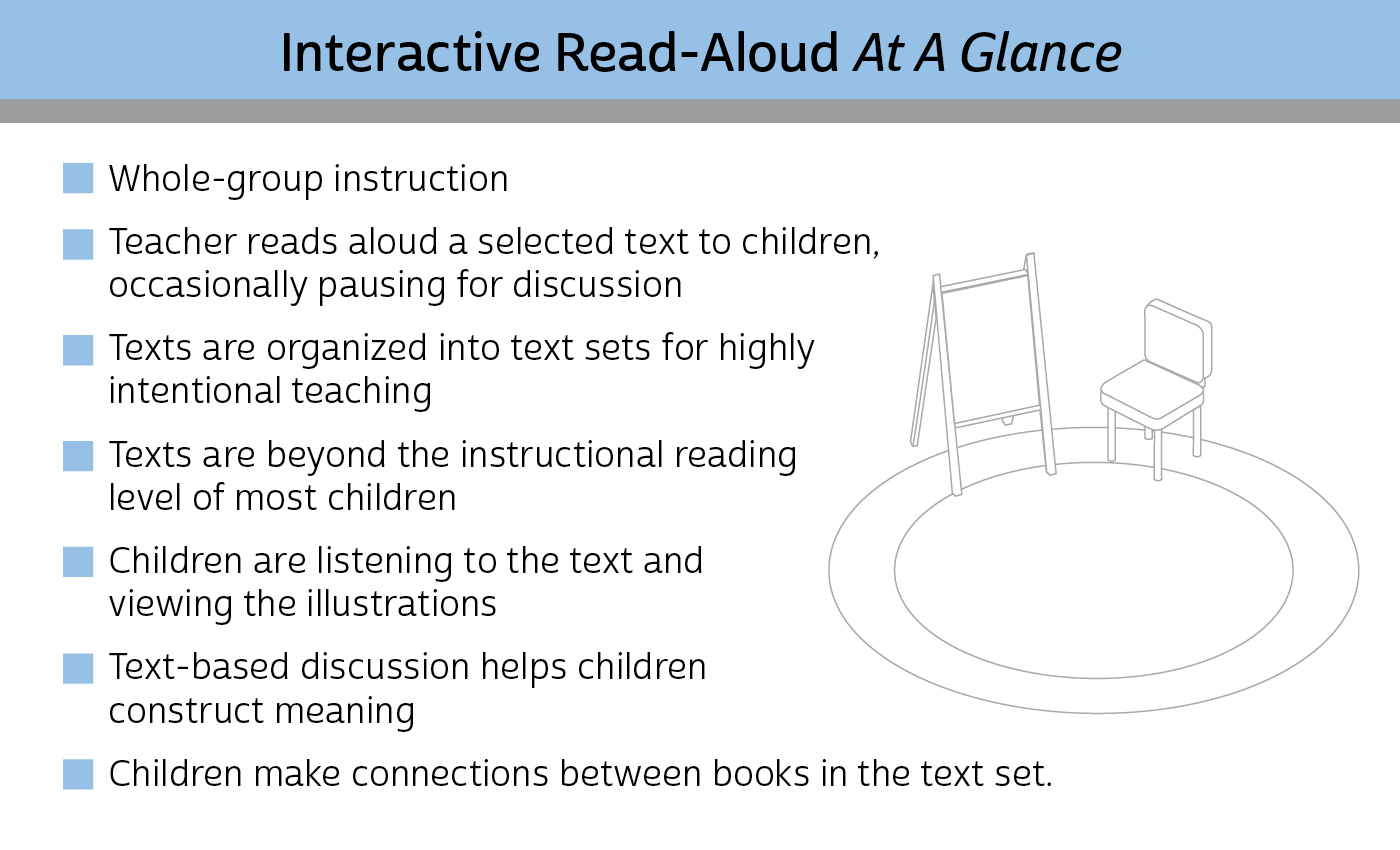*Effective reading instruction involves a combination of powerful instructional settings. This post is the next in our "What is...?" series, where we define each instructional context that makes up a coherent literacy system.
*Effective reading instruction involves a combination of powerful instructional settings. This post is the next in our "What is...?" series, where we define each instructional context that makes up a coherent literacy system.
What is interactive read-aloud?
Interactive read-aloud is a whole-group instructional context in which you read aloud a selected text to the whole class, occasionally and selectively pausing for conversation. Students think about, talk about, and respond to the text as a whole group or in pairs, triads, or quads. Both reader and listeners actively process the language, ideas, and meaning of the text.

Why is interactive read-aloud important?
As an instructional context, interactive read-aloud:
- Allows readers to experience rich, interesting texts that are age- and grade-appropriate, regardless of their independent or instructional reading level
- Provides a context for learning how to talk about texts with others
- Builds a community of learners with shared literary knowledge
- Expands knowledge, language, and vocabulary
- Builds a foundation of mentor texts for reading and writing mini lessons.
“Interactive read-aloud is the foundation of a community that shares literary understandings through thinking and talking together.” – Irene C. Fountas and Gay Su Pinnell
What does interactive read-aloud look like?
Be sure all students are comfortably seated in the whole-group area and can easily see and hear the text being read aloud. Sit at the front while students are clustered facing you. Alternatively, have students sit on chairs in a horseshoe shape. Allow space for students to turn and talk to each other.
Structure of an interactive read-aloud lesson:
- Introduce the text – Engage student interest and activate thinking.
- Read the text – Stop a few times to invite thinking and a brief conversation. Students may turn and talk in pairs or threes, etc.
- Discuss the text –Invite students to talk about the book. As students reflect on the meaning of the whole text, guide them toward some of the key understandings and main messages of the text.
- Revisit the text (optional) – You may want to revisit the book (on the same day or on subsequent days) to reread it, or parts of it, so that students can notice more about how it is crafted and build a deeper meaning.
- Respond to the text (optional) – Engage students in additional experiences to enhance their appreciation and interpretation of the text, e.g., writing about reading, art, drama, and inquiry-based projects.
Interactive read-aloud is the foundation for instruction in your classroom. It provides rich opportunities for every student to expand background knowledge, experience age-appropriate and grade-appropriate text, and learn a variety of ways to think deeply and use academic language to talk about an engaging text.
To learn more about the Fountas & Pinnell Classroom™ Interactive Read-Aloud Collection, click the link below.
~The Fountas & Pinnell Literacy™ Team
Check out the entire "What is?" blog series:
- What is Guided Reading?
- What is Interactive Read-Aloud?
- What is Shared Reading?
- What are Reading Minilessons?
- What is Independent Reading?
- What are Book Clubs?
- What is Phonics, Spelling, and Word Study?
.


